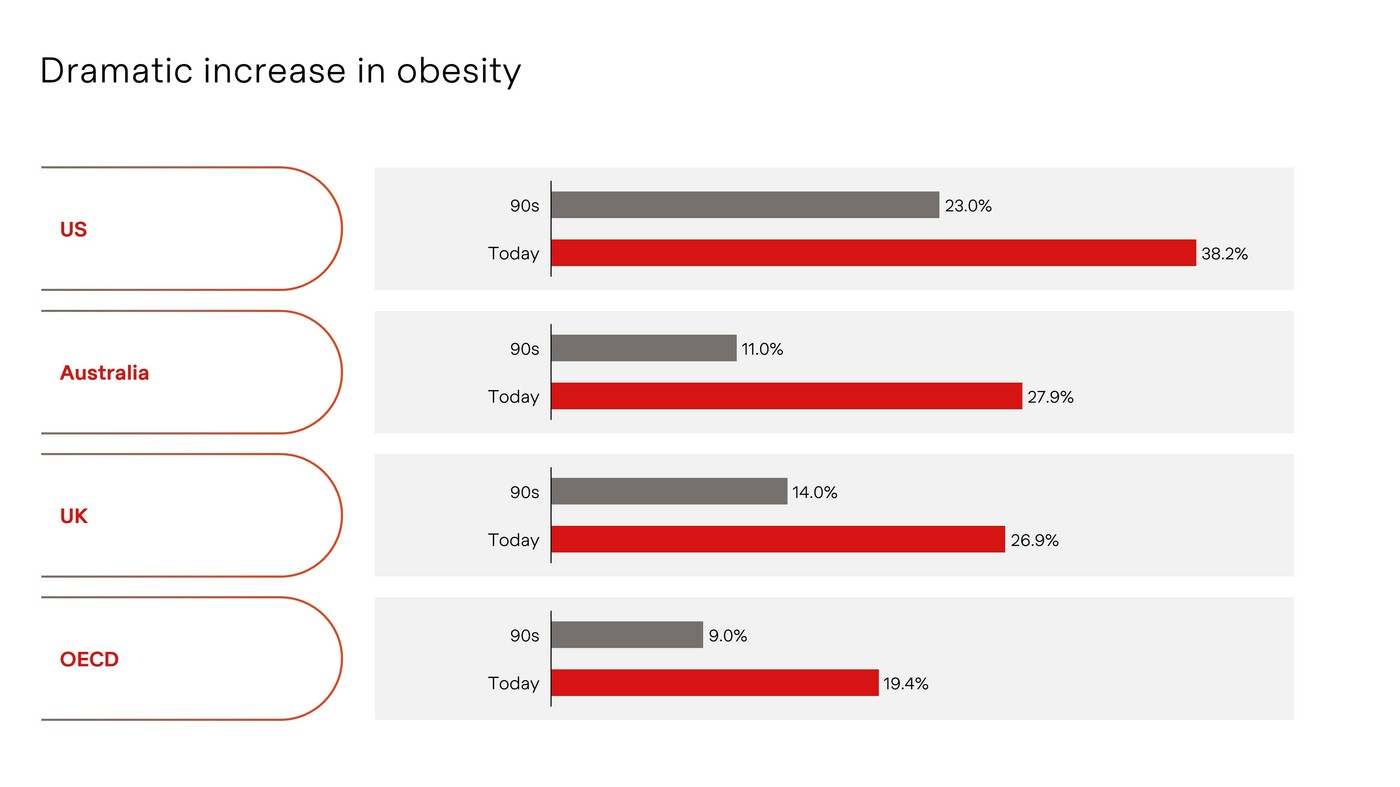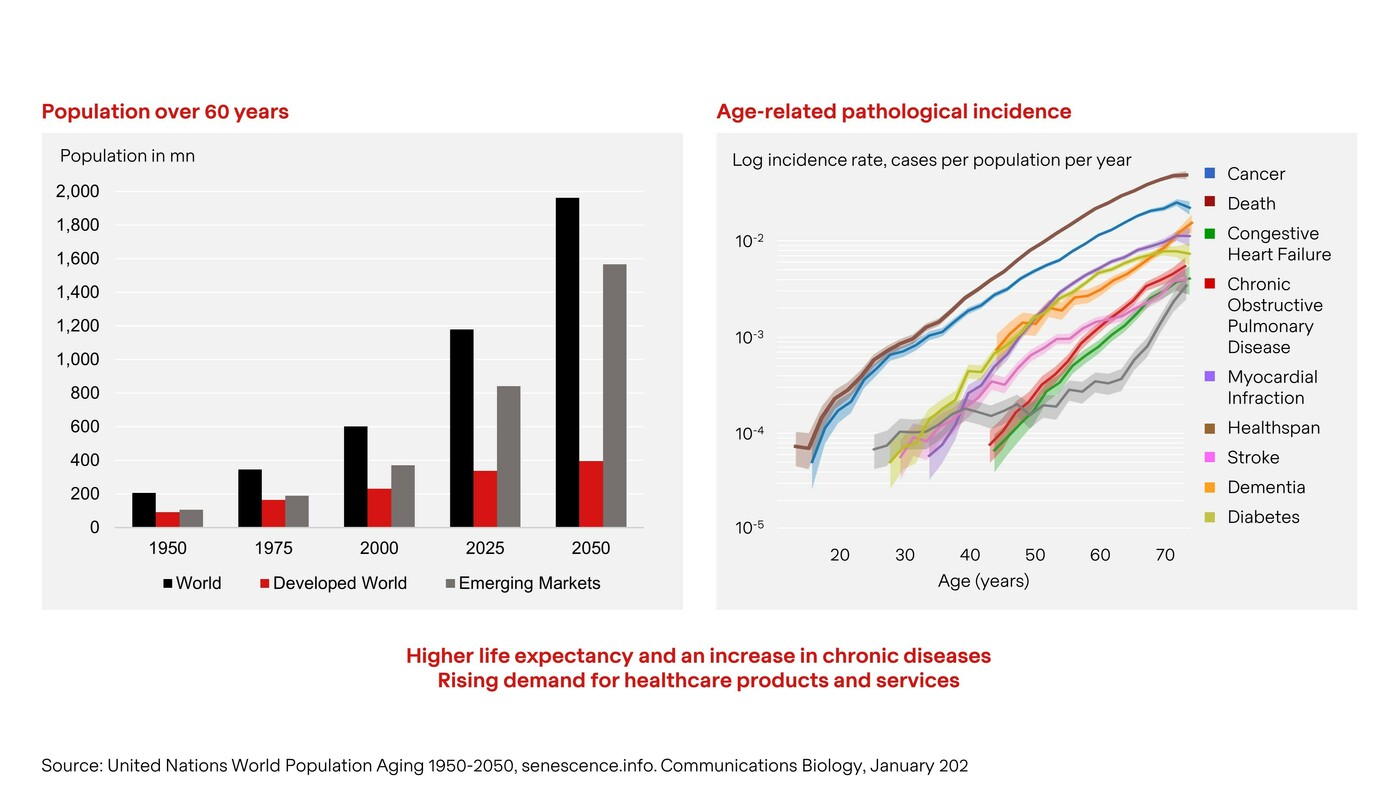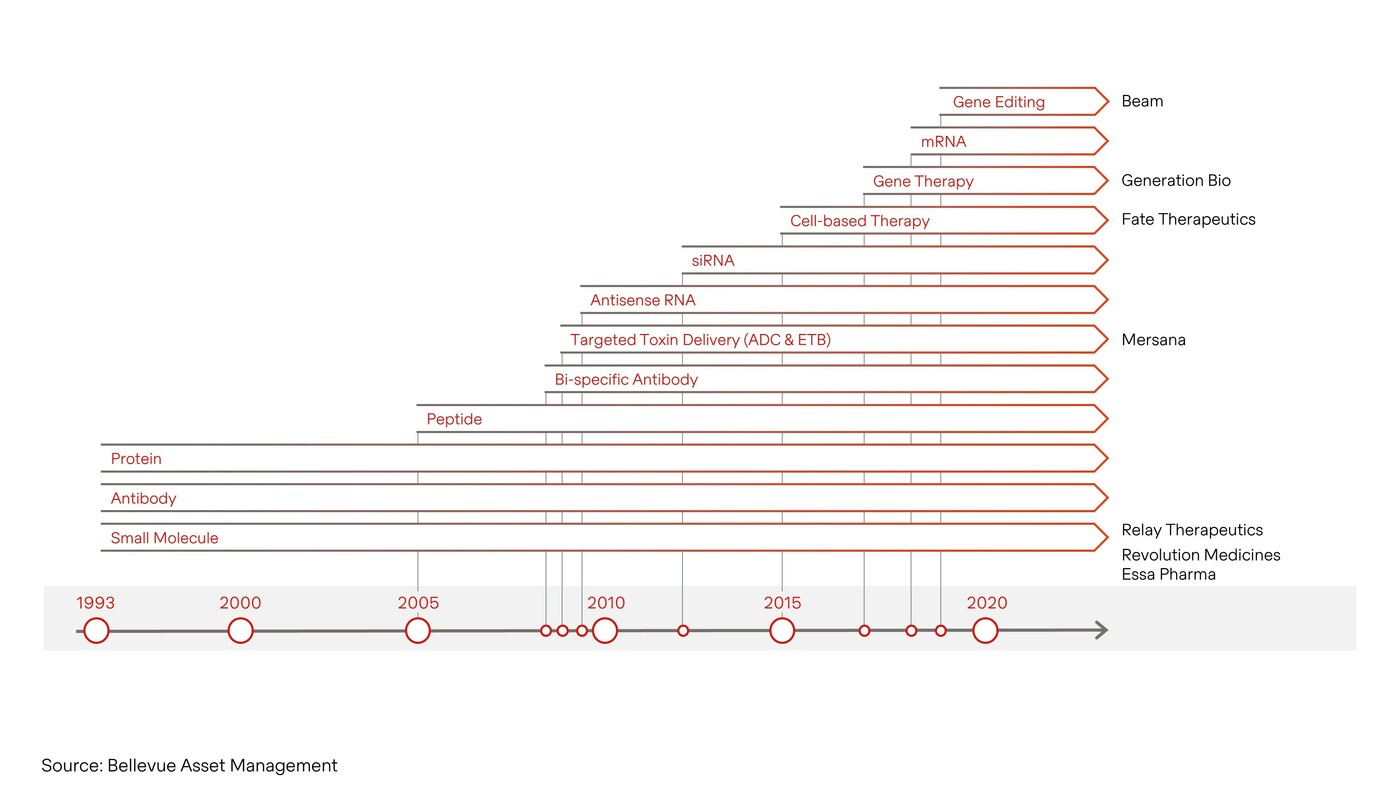
Growth Drivers
Increasing Life Expectancy
Higher life expectancy is one of the greatest achievements of our civilization. The United Nations estimates that the global population will rise by one-third between 2010 and 2050 to a total of 9.1 billion people. The proportion of people over 60 is set to treble from 760 million to 2 billion. On the down side, population aging is associated with an increase in age-related diseases, which puts an immense strain on healthcare systems.
There is also a higher demand for treatment of age-related neurodegenerative conditions such as Alzheimer’s disease. Market demand is still not being met by the treatments available today, which means huge unexplored markets are waiting to be tapped.
An unhealthy lifestyle and its consequences
Alongside population aging, another factor driving growth in the biotechnology industry is the global spread of the western lifestyle. In 2008, 1.4 billion people – and rising – were overweight, according to WHO estimates. Pathological overweight (obesity) causes metabolic syndrome, a cluster of conditions including type 2 diabetes, high blood pressure, hardening and narrowing of the arteries, and blood lipid abnormalities.

Friendly regulatory environment
The regulatory and political environment for biotechnology has seen a definite improvement on a global scale. The risk of clinical failures has declined as a result of more effective cooperation with regulatory bodies. In the US, receiving a so-called "priority designation" will shorten the drug review procedure by several months.
The GAIN Act for antibiotics and the Orphan Drug Act for rare diseases are good examples showing that regulatory incentives can have the effect of encouraging progress in certain therapeutic areas. Both pieces of legislation give companies longer market exclusivity and tax breaks, among other incentives. Similar legislation has now been passed in Asia and Europe, too.
Although high drug prices continue to fuel political debate from time to time, it is clear that drug manufacturers need to cover their development costs and that, while new therapeutic approaches may put a strain on healthcare bills in the short term, they help to generate savings in the long term by replacing more expensive therapies.
The continuing importance attached to innovation in the US is also evident in the new PDUFA guidelines, PDUFA VI. The new law ensures the consistent funding of the FDA during fiscal years 2018–2022, enabling the agency to continue to bring important new medicines to the market. This regulatory environment is one reason why more than half of all new drugs now originate in biotech labs.
Even though the pandemic impacted the industry and regulatory authorities, 53 approvals were awarded in 2020, excluding emergency use authorizations such as those for SARS-CoV-2 vaccines. 2021 shall be no exception to this trend, with regulatory authorities continuing their COVID response but supporting innovative technology progress and clinical projects and by reviewing important registration filings.
Technological progress
Progress for the newest drug modalities will be a focal point for biotech investors in 2021 and beyond. With important and highly promising results presented in 2020, further proof for technologies such as gene editing, next generation gene therapy and cell therapy technologies are expected. Exemplary of such success is the gene editing treatment CTX001 by Crispr Therapeutics and Vertex to treat sickle cell and beta thalassemia patients. A one-time treatment, still a rather invasive procedure requiring transplantation so far has resulted in de facto functional cures in all treated patients. Increasing knowledge driving efficacy and maintaining a clean long term safety data will allow that the gene editing companies move from rare and severe diseases towards broader and large chronic diseases. To achieve this, further technological advancements are required to improve ease of use and administration routes, lower manufacturing costs and growing safety database.

